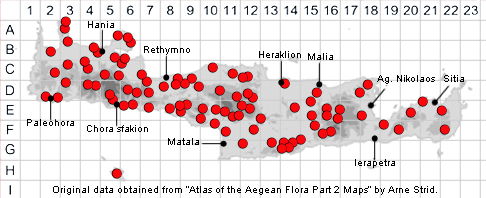
CERASTIUM GLOMERATUM
Family and Genus:- See- CARYOPHYLLACEAE
Common Names:- None
Homotypic Synonyms:- Alsine glomerata, Cerastium viscosum var.
glomeratum, Cerastium vulgatum var. glomeratum.
Meaning:- Cerastium (Gr) Horned, (the fruiting capsule's shape).
Glomeratum (L) Collected into heads.
General description:- Annual.
Stem:-
1) Up to 30(-45) cm; with or without glandular hairs.
Leaves:-
1) 5-25 mm.
a) lower, oblanceolate to obovate.
b) cauline, ovate or ovate-elliptical, obtuse, hairy.
Flowers:-
1) In compact, cymose clusters.
2) Pedicels, shorter than the sepals. without deflexed-appressed eglandular hairs,
with or without glandular-hairs.
3) Bracts, herbaceous.
4) Sepals, 4-5 mm, lanceolate, acute, with a narrow, scarious margin, with
glandular hairs and eglandular hairs exceeding the apex.
5) Petals, more or less equalling or shorter than the sepals (rarely absent), bifid for
up to 1/4 their length.
6) Stamens, 10.
7) Styles, 5.
Fruit:-
1) Capsule, 6-10 mm.
2) Seeds, 0·4-0·5 mm, pale brown, tuberculate.
Key features:-
1) Pedicels, without deflexed-appressed eglandular hairs, with or without glandular-
hairs.
2) Sepals, with eglandular hairs protruding well beyond apex.
3) Pedicels, shorter than sepals.
4) Flowers, in dense clusters.
Habitat:- Open calcareous woodland, soil patches in open shrubby vegetation,
rocky places, screes and gravelly mountain roadsides up to 1900 m.
Distribution:- Widespread and common throughout the Mediterranean C and C
Europe, SW Asia. Widespread and common on Crete.
Flowering time:- Mar-June
Photos by:- Popi Bormpoudaki
SPECIES DESCRIPTION
